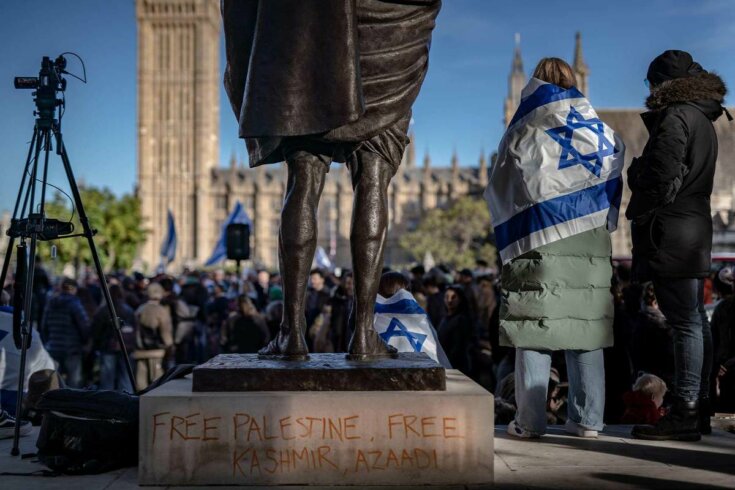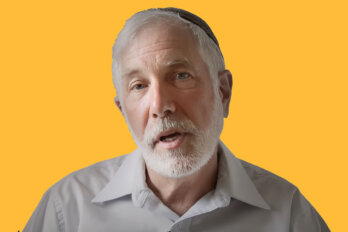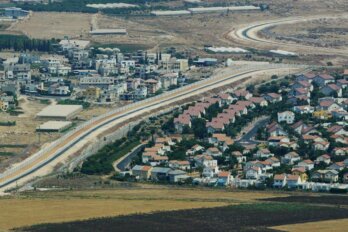On October 1, we launched our book, The Wall Between: What Jews and Palestinians Don’t Want to Know about Each Other, at the Charles Pachter Museum in Toronto. Guests included Jews, Palestinians, and others who are interested in overcoming the enmity between the two sides that for so long have been in conflict. There was music and poetry. There were words of support and encouragement from the audience as we—a Jew and a Palestinian—spoke about our plan to tour the book across Canada and the US in an attempt to break down barriers that usually prevent our two camps from humanizing each other.
And then, less than a week later, horrific violence broke out as Hamas launched a brutal attack on Israel and Israel responded with massive military force, cutting off access to power, water, fuel, supplies, and more for Palestinians in Gaza. As we prepared to set off for the US for some of our first tour stops, we watched as Jews and Palestinians in Canada imported the conflict, not through rockets and guns but with ever-increasingly violent rhetoric and absolute narratives that expunge the very existence of the other’s perspective and life experience.
There are student groups that have blamed Israel for Hamas’s attacks, while many politicians—including Prime Minister Justin Trudeau—and other public figures have declared that they stand by Israel and support its right to defend itself. These unequivocal statements inflame tensions by resorting to the narrowest definition of good guys and bad guys. In both these cases, the other side is dismissed. Those of us watching the war unfold from afar tend to be drawn to simple stories that reflect tribal loyalties and communal trauma—which is how we become part of the problem instead of its resolution.
We have observed in our interactions with many Jewish friends and colleagues that some advocacy groups have reduced their collective pain to a simple choice that is reminiscent of George W. Bush’s declaration after 9/11: “Either you are with us, or you are with the terrorists.” Their responses to Hamas’s incursion into Israel have reflected this binary. Many perceive Palestinian resistance as terrorism driven by antisemitism, seeking only to destroy Israel.
Similarly, in conversations with Palestinians, we see that their collective pain has coalesced behind one fundamental principle: resistance to oppression, in any form, is sacred. It’s a necessary means of pushing back against Israel’s occupation, its violations of international law, and what many describe as its settler-colonial and apartheid policies. The widespread outpouring of grief and sorrow for Israelis after Hamas’s attack left many Palestinians exasperated as to why their own suffering does not receive the same kind of empathy. Many Palestinians we have spoken to also feel pressured by Western societies to unequivocally condemn Hamas or be deemed supporters of terrorism. They see this demand as an attempt to obfuscate the underlying causes of Palestinian resistance, including the misery caused by fifty-six years of occupation and the devastating sixteen-year siege of Gaza. Yet for many in the West, talking about the root causes of Hamas’s attack is seen as a way to minimize its brutality.
The end result is that for many Jews and Palestinians, there is no in-between, no shades of grey, no nuance.
These absolutist views prevent each side from expressing empathy for the other’s pain out of fear of disloyalty to their own community. Acknowledging the other’s suffering may be perceived as minimizing their own. This is a struggle where neither side is able to demonstrate grief for the other.
Our book focuses on how trauma acts like a force field that repels narratives that appear threatening to our own perspectives. The respective traumas—incurred by Jews through millennia of exile, culminating in the Holocaust, and by Palestinians through mass displacement during the Nakba—have kept us each in our camps, resistant to viewing the other and the other’s pain. Trauma is formed not just from the loss and grief of the present but also reflects past grief and fears of future grief. It is a very real obstacle to reaching out beyond our own painful stories and to grasping the depths of the other’s pain. Seeing trauma as being unique to one group is a trap that perpetuates the status quo: each community remains siloed, indifferent, antipathetic, and dismissive of the other. Seeing outside one’s own trauma is more difficult in this moment, which is also what makes it so necessary.
It is possible to grieve the victims of Hamas’s brutal attacks as well as the ongoing suffering of Palestinians under siege in Gaza. One can condemn the violence against civilians in Israel—and the daily violence and humiliation experienced by Palestinian civilians under Israeli occupation. Let us not judge whose suffering is worse and whose violence is justified.
Even after having written a book on mutual understanding, we, too, feel the pull between our tribal loyalties and our moral compasses that are appalled at the suffering endured by both Jews and Palestinians. What is happening in Israel and in Gaza is clearly highly painful and dislocating to us in the diasporas—even without the two sides resorting to trading blame and accusations. The emotional exhaustion we feel need not drive us into hostility and hatred toward fellow Canadians. Our role should be to express mutual compassion and a willingness to work together to create a vision for a just future.






